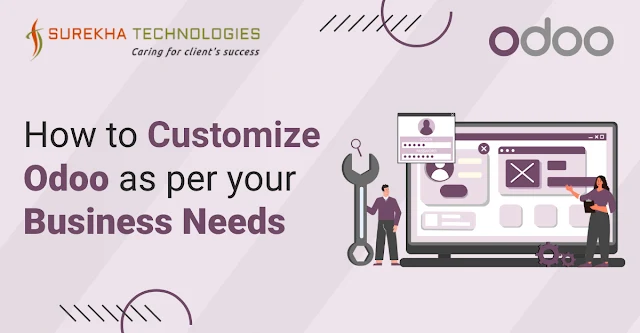As everyone knows, Odoo is the suite of a leading open-source business application. Every business has its own requirements, so just because one strategy works for one firm doesn't mean it will work for all companies. Therefore, modifying your business software to meet your unique needs is essential. Odoo customization is vital since it can meet your unique business needs. This blog will explain several methods and our standard procedure for customizing Odoo.
A customized application can meet client requirements by giving users a unique experience with their needs and suggestions. Odoo offers a fully complete solution to achieve your all business needs.
Odoo offers three models:
- Odoo App
- Odoo Standard
- Odoo Custom
Users can choose the model based on their business requirements. But not all business processes are similar, they might require some ERP customization to work better and more efficiently. It is necessary for a business to extend its features and functionality to map the flow of its business process.
Depending on which model you use, you can customize Odoo. The different ways of customizing Odoo can be;
- If you are using Odoo online, you can buy Odoo studio for customization. Odoo Studio allows you to build your own customized application. But in case of complex customization, Odoo studio might not work for you.
- There are multiple customized applications available at the Odoo marketplace. And you can find the customized application which will be the perfect match for your organization.
- If you are using Odoo.sh, it allows you to deploy your own Cloud platform with an email server. It is made for customized Odoo implementation.
To manage the customization, you would need an expert Odoo service provider like Surekha Technologies. You can get all Odoo consulting services from a certified Odoo partner. They will establish the customization and implementation of the Odoo based on the standard procedures and deliver a hassle-free process to you as per your business specifications.
Standard Odoo customization process that we follow:
- Requirement gathering: the foremost step of the Odoo customization process is gathering information on business requirements with the technical team.
- GAP & ROI evaluation: This step includes an analysis of the scenarios, expectations, and gaps. Based on the gap, the best possible Odoo customization can be provided.
- Possibility analysis: The next step is the assessment of the practicality of a modification in Odoo, without compromising the performance. It can be said as a proof of concept too.
- Estimation: Estimation will be the description of the overall service provided, cost of materials, and project timeline.
- Customization/Extension: There are multiple ways to do the extension or customization in Odoo. You can override the base-code, extend the base-code or modules, use the Odoo marketplace apps, add custom themes, use Odoo studio and add custom fields from UI, etc. Depending on ?the requirement you can choose which is the best fit approach for the customization you need.
- Testing: The testing phase ensures that what delivered to the client indeed satisfies the agreed standards and specifications of the module. Also, we provide automatic testing to our clients.
- Delivery: It will deliver the complete customized module to the client.
Conclusion:
Odoo customization depends on which module the organization currently uses and as per the module, the best method of customization can be applied. We as an Odoo customization company empower organizations with tremendous opportunities to grow and expand. As a certified Odoo partner we follow the standard process of customization.

Comments
Post a Comment